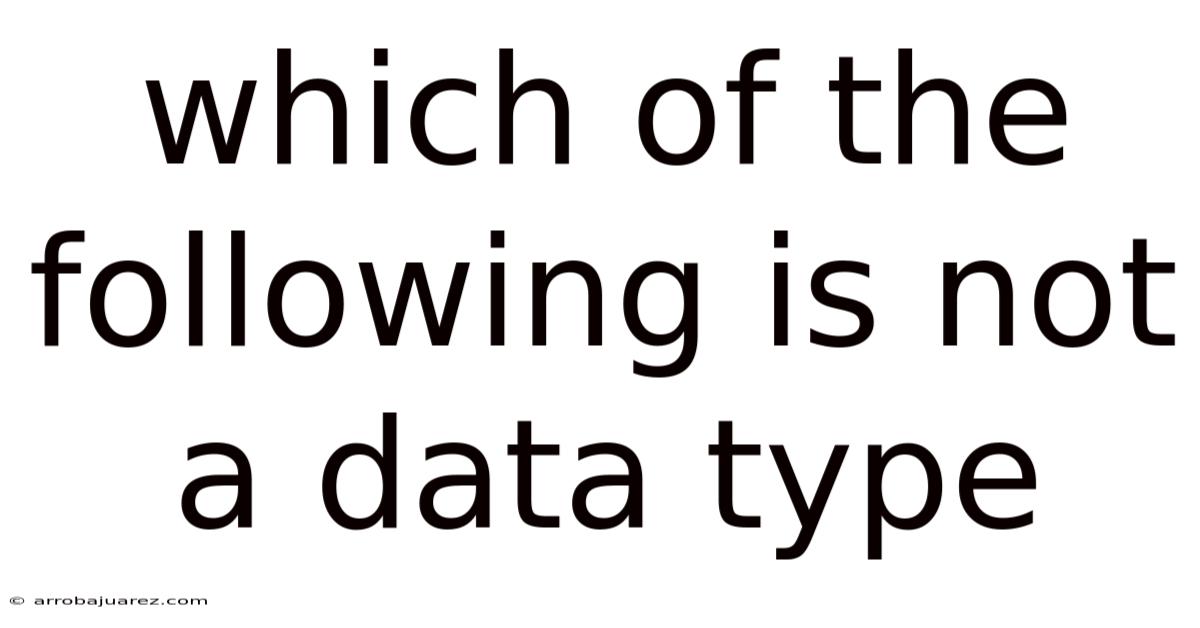Which Of The Following Is Not A Data Type
arrobajuarez
Nov 09, 2025 · 10 min read

Table of Contents
Data types are fundamental building blocks in programming, dictating the kind of values a variable can hold and the operations that can be performed on it. Understanding data types is crucial for writing efficient, error-free code. When faced with the question, "Which of the following is not a data type?", it's essential to consider both primitive and complex data types across various programming languages.
Introduction to Data Types
Data types classify values that a variable can hold. They inform the compiler or interpreter how to allocate memory and what operations are valid. In most programming languages, data types are categorized into primitive (or basic) and complex (or composite) types.
Primitive Data Types
These are the most basic data types and are often built into the language. Common examples include:
- Integer (int): Represents whole numbers without any fractional part (e.g., -3, 0, 5).
- Floating Point (float): Represents numbers with a fractional part (e.g., -2.5, 0.0, 3.14).
- Character (char): Represents a single character, such as a letter, digit, or symbol (e.g., 'A', '7', '
Latest Posts
Latest Posts
-
What Needs To Happen To Make Scaffolding Safe For Workers
Nov 09, 2025
-
Which Option Best Completes The Title Of The Graphic
Nov 09, 2025
-
Using Accrual Accounting Expenses Are Recorded And Reported Only
Nov 09, 2025
-
The Effects Of Inflation Are Seen In
Nov 09, 2025
-
Proctored Assignments Are Indicated By
Nov 09, 2025
Related Post
Thank you for visiting our website which covers about Which Of The Following Is Not A Data Type . We hope the information provided has been useful to you. Feel free to contact us if you have any questions or need further assistance. See you next time and don't miss to bookmark.